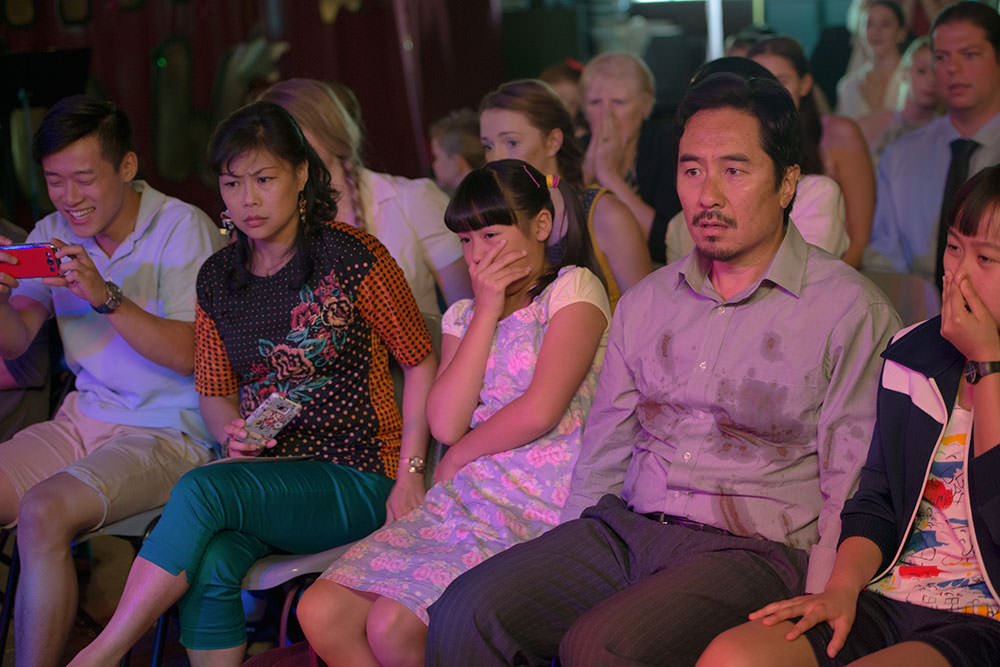Screen Australia announces Diversity in TV drama study
Local TV content is hugely popular with audiences and plays a vital role in informing the ways we think about ourselves and each other, but do our TV dramas reflect the diversity of Australia today?
 The Family Law series 1
The Family Law series 1
Screen Australia is seeking to measure this as one gauge of the cultural relevance of our small-screen stories.
Questions and conversations about diversity on Australian screens have been gaining momentum in recent months. Amidst calls for discussion and change, Screen Australia has today announced a timely new research project into the levels of representation of cultural diversity, disability and LGBTQI in Australian television drama broadcast over the last five years.
Screen Australia CEO Graeme Mason said: “Diversity has been a key point on Screen Australia’s agenda for some time, and this research project is an important factor in understanding where Australia is at. We are fortunate enough to live in one of the most diverse countries in the world and our TV drama should reflect the energy of all those stories.”
Of the research, he added, “We want to create a benchmark from which we can gauge the relevance of our on-screen stories to contemporary audiences. This is an important issue for all of us in the screen industry and we encourage everyone approached to take part in the survey.”
This new research will analyse the main characters and the actors that played them in Australian adult and live-action children’s TV dramas (including comedy) broadcast from 2011 to 2015 on commercial free-to-air networks, public broadcasters and subscription channels.
Concurrently, a series of surveys will explore experiences and perceptions of barriers and successes in representing diversity in TV drama. Actors, agents, casting directors and the credited producers, writers and directors of television drama will be surveyed and responses will be anonymous.
Working in association with the Australian Human Rights Commission and the Diversity Council Australia, and with consulting partners the ABC, SBS, Media Entertainment and Arts Alliance, Australian Writers Guild, Australian Directors Guild and Screen Producers Australia, Screen Australia intends to announce the outcomes of the research in the next few months.
This will be the first analysis of this kind undertaken by a federal screen agency since Harvey May’s 2002 ‘Broadcast in Colour’ report for the Australian Film Commission. No current benchmarks exist for on-screen diversity in Australian television.
In her 2015 Logies acceptance speech Aboriginal actor Miranda Tapsell called for Australia’s screen industry to “put more beautiful people of colour on TV and connect viewers in ways which transcend race and unite us”. This echoed earlier calls from actors Firass Dirani, Jay Laga’aia and Remy Hii to end “white casting” on Australian television.
Screen Australia’s research to date suggests that audiences, as well as actors, have identified the problem. The 2013 ‘Hearts & Minds’ audience study revealed a perception that mainstream Australian content failed to reflect the multicultural reality of urban life. 2015 ABS statistics show that more than a quarter of Australians were born overseas and, of the Australian-born, more than forty-three per cent had at least one parent born outside Australia (2011 Census).
The research initiative was foreshadowed in Screen Australia’s announcement of Gender Matters, in December 2015.

What to read next
Screen Australia launches a comprehensive report into diversity on Australian screens to inform the conversation and calls for real, long-lasting change.
24 Aug 2016
Caris Bizzaca